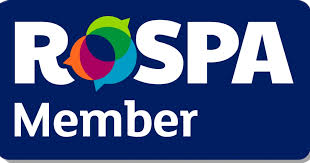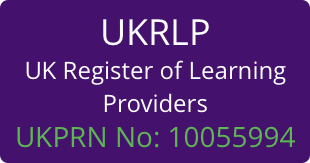
There are a number of factors to consider when pricing your e-learning, as we discuss below, however the most important thing is to do your competitor and prospective customer research. Ideally you have completed this prior to spending time and money on developing your e-learning. Your research should include finding out what other e-learning providers are charging for similar online courses and, with the data available to you, how popular are their courses. To get an understanding of the popularity of another providers e-learning, check out their SERP (Search Engine Result Page) credentials, delve into their SEO (Search Engine Optimisation) data to find out how many authoritative websites are linking back to their courses, check how many reviews there are of their courses and what is being said.
Once you’ve done your competitor research, think about the perceived value of your e-learning to your prospective customers. To do this you need to consider who are your prospective customers and their personas; so what are their goals, needs, expectations, behaviours and motivations. Whether a consumer or a business you need a good understanding of who your potential customers are. Why would they be interested in your online courses? If your e-learning fully meets the requirements of these prospective customers then their perceived value of your course will be much greater than if it doesn’t.
The perceived value will also be influenced by the content of the course:
- What is the subject? A very generic subject, which applies to a wide audience, will most definitely have a lower value than if the product has technical content that is more specialised.
- How in depth is the content? A 5-minute bite sized piece of e-learning is clearly going to have a lower value than a more in-depth longer course.
- What is the intellectual level? The higher the level, the higher the perceived value.
- Does the content cover the knowledge requirements of a qualification? If so then the price is likely to be significantly higher.
Experienced buyers of online training will be looking for specific instructional design that they know will engage them, and/or their staff. This might include:
- How interactive and innovative is it? If the course includes interactivity that truly engages the learner, for example, branching scenarios and conditional activities that involve sophisticated ‘try it out’ exercises, then the course can demand a higher price.
- Is their video? Is the video interactive? Both can positively influence the learner’s engagement with the course and make it more attractive to the buyer.
- Are there accessibility options? Buyers are often looking for courses that offer a variety of accessibility options to meet the requirements of different learner needs. For example, changing the font size and colours, providing a voice over and course transcript.
Another consideration is your estimation of the demand for your e-learning. This is difficult to judge if you are just starting to develop your courses or you haven’t previously sold into the sectors that you are targeting. As you start to market your e-learning to your chosen customers and sectors you will get a better idea of the likely demand. However, you don’t want to find out that there is very little demand for your courses after you’ve invested time and money creating them. Hence your initial competitor and prospective customer research is really important to get the best gauge possible of demand.
Of course, a factor that influences your pricing is the cost to produce the e-learning, which will vary tremendously on many factors; too many to list in this article. It’s presumed that your e-learning is being developed to make money so your costs are important. The reason why so many business customers purchase off-the shelf online training for their staff is because it is extremely time consuming, and therefore costly, to create good quality e-learning. Research that was completed by the Chapman Alliance1 identified that an hour of e-learning costs around $10,000 or £7,830 to produce. To be more accurate you need to have answered the questions above on content and instructional design and decide what type of e-learning you are going to, or have, produced. The following is a rough guide of the different levels of instructional design, the lower the level the lower the cost to produce it and the lower the price to the customer:
Level 1 – Text and graphics
Level 2 – Text, graphics, interactive knowledge checks and activities
Level 3 – Text, graphics, interactive knowledge checks and activities, video and audio
Level 4 – All the above, plus branching scenarios, games, use of augmented reality
A level 3 course is likely to take an e-learning developer anything between 100 and 180 hours to produce an hour-long course. However, this will significantly alter if the video content is already available and whether or not the developer is experienced at authoring online courses. If you are using a rapid authoring tool to create your e-learning, then research has found that per finished minute of e-learning takes approximately 2 hours to produce, so for one hour’s course this will be 120 hours. This does not include producing video and audio recordings.
It is worth noting that if you are converting an instructor led training session into e-learning, that the e-learning course duration will be approximately 50% that of the instructor led training3
You should also take into consideration the hosting cost for your courses; how will customers access your e-learning? Are you investing in a learning management system with a subscription cost, delivering the courses within a website etc. Marketing and administration are also on-going costs to consider.
Another pricing consideration is the type of licence you will be offering customers. There is a lot of different terminology for licensing models, however this is ours:
- User Licence – a licence for a specified user on a specified course. This is the base price for a course.
- Course Licence – a licence for a specified course for any learner. The course licence consists of a number of enrolments to use on a specified course. Discounts would normally be applied to a course licence with 10 or more enrolments.
- Subscription Licence – a licence for a maximum number of users to access any course in a library of courses. This type of licence usually carries the highest level of discount as buyers are buying access to a library of courses for a number of staff, but may well not use the full library.
- Annual licence – a subscription licence that enables you to install the courses of your choice on your own learning management system, LMS.
eLearning Marketplace sells around 3,500 online courses that are produced by around 100 e-learning publishers. Prices for their courses range tremendously, but this signifies the vast range of course durations, uniqueness of the subject, level of instructional design etc. For example, a course which has a duration of 30 minutes can start at £10 and go up to £25, a course that is 2 hours in duration can start at £12 and go up to £35, and a level 7 management qualification with 32 hours duration starts at around £1000.
In summary, you most definitely don’t want to price yourself out of the market with a price that is too high for your e-learning, but equally producing e-learning is an expensive task, so you don’t want to set your price so low that you don’t make a profit. If you set your price based on a competitor’s pricing, it doesn’t mean that you will definitely achieve a similar price, as many other factors impact whether or not you can sell your e-learning, as explained. As the saying goes ‘you can have the best product in the world but if no-ones knows about it, it won’t sell’. Equally if you have an inferior product that everyone knows about it, it won’t take long for people to stop buying it.
You may be interested in our Blended Learning Quality Assurance Framework Tool, which you can download HERE
Author: Carolyn Lewis, Head of Business Development
You may also be interested in:
The Impact of e-Learning Growth on Workplace Learning
How to Effectively Evaluate e-Learning
What is Sustainable Learning Content?
Sources:







 UK: 0844 854 9218 | International: +44 (0)1488 580017
UK: 0844 854 9218 | International: +44 (0)1488 580017








